I've been building some strange waveguides and publishing them to a car audio forum. I thought I'd post one here, in case anyone feels like loading a waveguide with a dome.
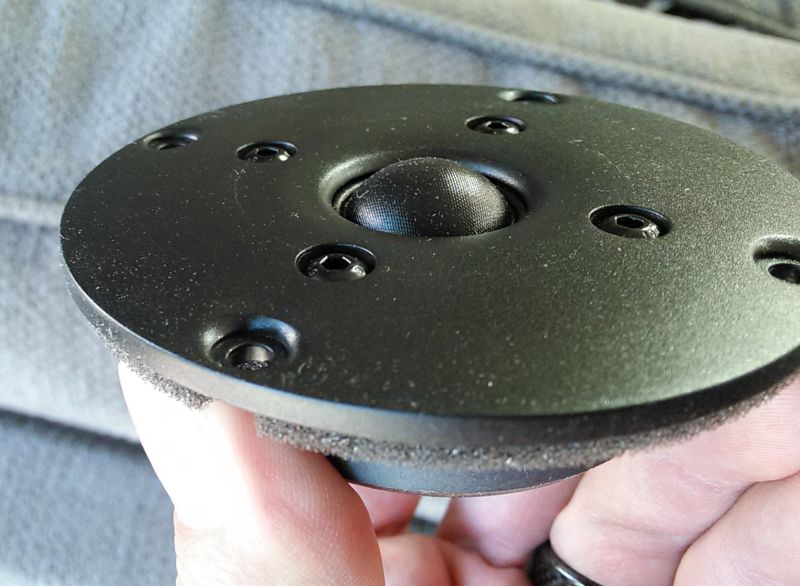
The tweeter I am using is a nice 3/4" unit from SB Acoustics.
I started out with a 28mm unit from Dayton, but that doesn't work. (I'll explain why it doesn't work shortly.)
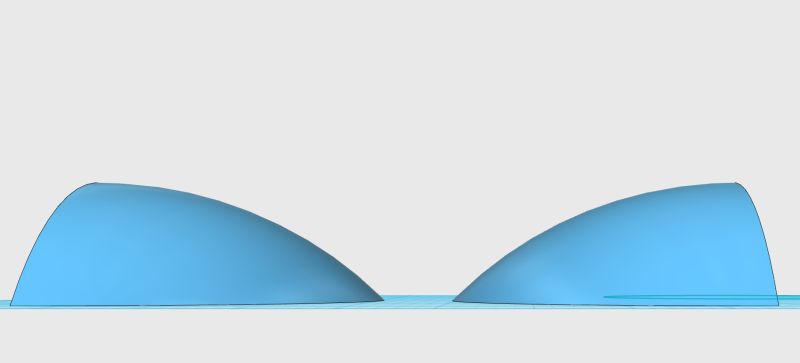

A lot of what I'm going to post is ripped off from Manny LaCarrubba and David Moulton*. So I'm going to stick with some of their conventions. In this case I'm matching the exit of the tweeter to the entrance of the waveguide. If you look closely at the SB acoustics tweeter, that's about ninety degrees. The shape above is a slice of a sphere; the slice corresponds to the part of the sphere where the tangent angle is 45 degrees. (To match the 90 degree exit of the dome.)
* https://www.google.com/patents/US20140119588?cl=en

The tweeter I am using is a nice 3/4" unit from SB Acoustics.
I started out with a 28mm unit from Dayton, but that doesn't work. (I'll explain why it doesn't work shortly.)


A lot of what I'm going to post is ripped off from Manny LaCarrubba and David Moulton*. So I'm going to stick with some of their conventions. In this case I'm matching the exit of the tweeter to the entrance of the waveguide. If you look closely at the SB acoustics tweeter, that's about ninety degrees. The shape above is a slice of a sphere; the slice corresponds to the part of the sphere where the tangent angle is 45 degrees. (To match the 90 degree exit of the dome.)
* https://www.google.com/patents/US20140119588?cl=en
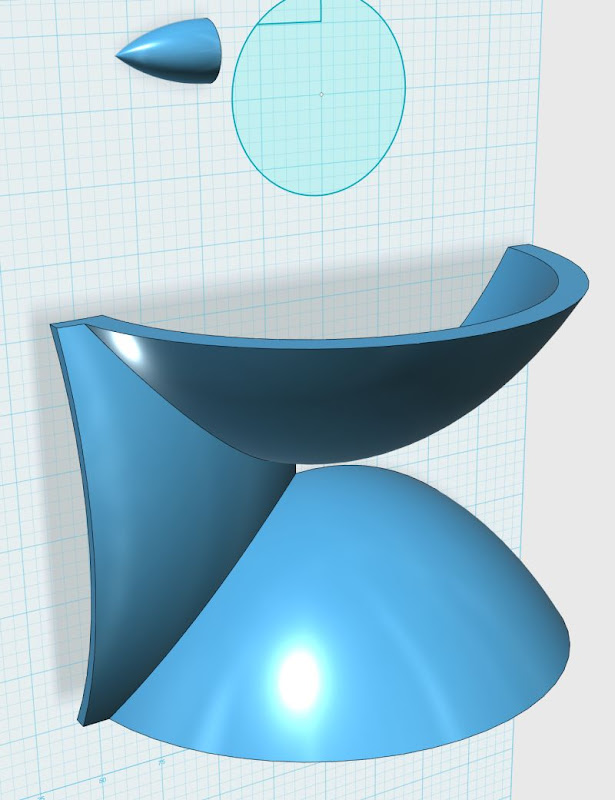
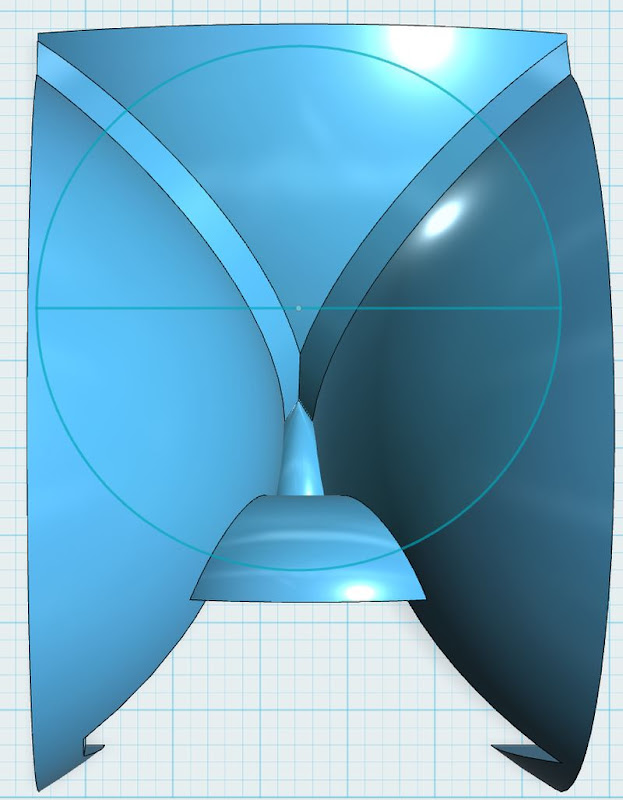
Some pics of it coming together
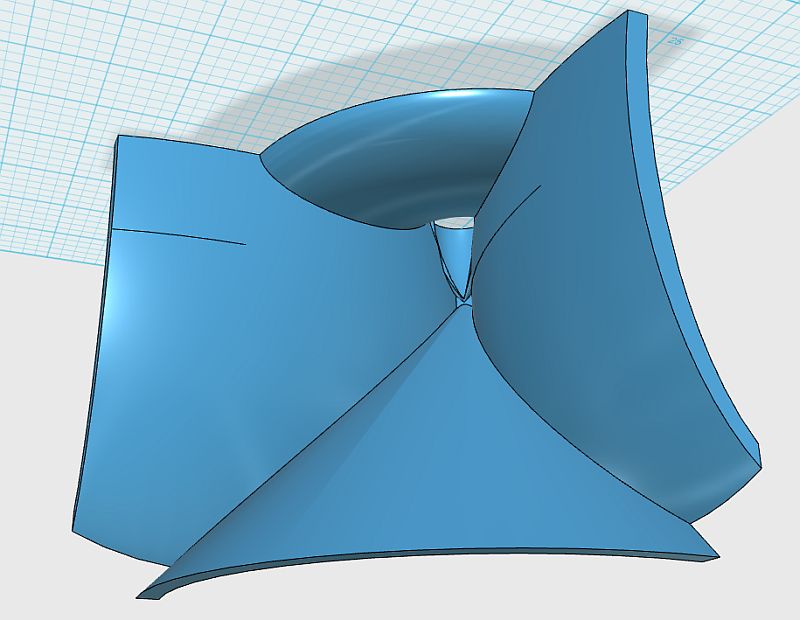
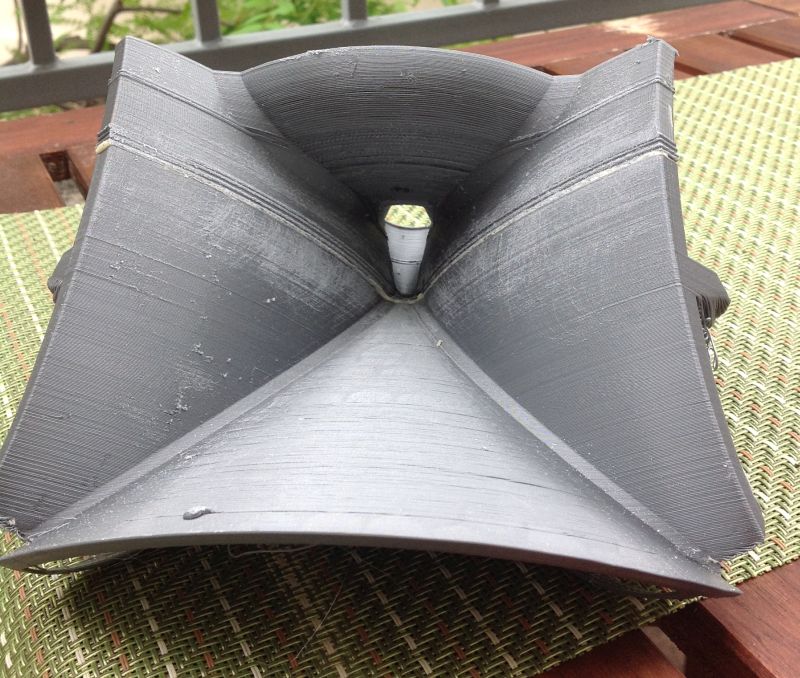
When it's done it will look similar to this, which I made a couple of weeks ago. The major difference is that the old one was designed to fire UP. The new one will be designed so that the tweeter fires sideways. Basically the same as the old one, but rotated ninety degrees.
Original !
For practical reasons, it'd be nice to have the tweeter firing down. It won't collect dust on the dome, especially it's sitting within a recess.
For practical reasons, it'd be nice to have the tweeter firing down. It won't collect dust on the dome, especially it's sitting within a recess.
Looks interesting.
"If you look closely at the SB acoustics tweeter"
The ring-dome one?
http://www.madisound.com/store/manuals/SB29RDC-C000-4.pdf
"If you look closely at the SB acoustics tweeter"
The ring-dome one?
http://www.madisound.com/store/manuals/SB29RDC-C000-4.pdf
That's some pretty impressive work there Patrick... 🙂
this design reminds me of JBL PT waveguides... it is quite useful in firing tweeter into a particular direction.
Can you post some more like this? or may be you can provide a link it to car audio forum where you have been publishing these designs
this design reminds me of JBL PT waveguides... it is quite useful in firing tweeter into a particular direction.
Can you post some more like this? or may be you can provide a link it to car audio forum where you have been publishing these designs

Patrick's using a 3/4" dome, the SB29 is a 1" ring radiator. My guess is the SB19: https://www.madisoundspeakerstore.com/soft-dome-tweeters-sb-acoustics/sb-acoustics-sb19st-c000-4-3/4-dome-tweeter-4-ohms/
Looks interesting.
"If you look closely at the SB acoustics tweeter"
The ring-dome one?
http://www.madisound.com/store/manuals/SB29RDC-C000-4.pdf
Badman used dome tweeters in a waveguide in a blog post some time back, maybe he'll see this and chime in.
Found it.
http://enjoythemusic.com/diy/0311/supertweeter.htm
Found it.
http://enjoythemusic.com/diy/0311/supertweeter.htm
Last edited:
Hi!
I didn't find any good priced dome tweeter plus waveguide combos.
Audax tw034 plus jantzen waveguide are high priced for my tastes.
I understood a waveguide can decrease the lower lpf crossover point.
Any suggestion will be very appreciated.
EDIT: I'm coming from this 3D:
Wide dispersion, quality tweeter
I didn't find any good priced dome tweeter plus waveguide combos.
Audax tw034 plus jantzen waveguide are high priced for my tastes.
I understood a waveguide can decrease the lower lpf crossover point.
Any suggestion will be very appreciated.
EDIT: I'm coming from this 3D:
Wide dispersion, quality tweeter
Last edited:
Hi!
I didn't find any good priced dome tweeter plus waveguide combos.
Audax tw034 plus jantzen waveguide are high priced for my tastes.
I understood a waveguide can decrease the lower lpf crossover point.
Any suggestion will be very appreciated.
EDIT: I'm coming from this 3D:
Wide dispersion, quality tweeter
I found that the 3/4" SB Acoustics dome works well on just about any waveguide. This is because of geometry.
If you have a dome with a diameter of 1", you're going to see a dip appear between 15khz and 20khz. Realistically, this might not be audible, but it's kinda annoying, right?
If you drop the diameter down to 3/4", you push the dip UP in frequency, to a point where it's above our ability to hear it
TLDR: you can mount an SB Acoustics 3/4 tweeter on just about any waveguide and it will work.
P.S. I know the Dayton tweeter works on the DIY Sound Group waveguide. This is because the wide angle of the SEOS waveguide prevents the high frequency dip that would normally occur. The cool thing about the 3/4" tweeters is that they work on nearly *any* horn or waveguide.

Looks like a 1" tweeter
3/4" would be better, but 1" is better than 1.25"
The wall angle has a large effect too. With something like the SEOS, the wall angle is so wide, you can make it work with a lot of different tweeters. As the wall angle gets narrower, things get trickier. This is because a 1" tweeter will start to beam around 13,500hz.
A 3/4" tweeter doesn't beam until 18khz. That's why it works so marvelously on a horn or waveguide. It's not a flat wavefront, but it's close enough. (The idea wavefront for a horn or a waveguide is flat.
Here's a quick description of why 3/4" domes work so well on a waveguide. Geddes understands this stuff better than I do, but here is what I know:
First off, the ideal diaphragm shape for a horn or a waveguide is a flat disc if the entrance angle is zero degrees.
IE, if you have an old-school horn and the throat isn't expanding at all, you want to load it with a compression driver or a tweeter that can produce a flat wavefront. It doesn't matter if the driver is physically flat, like a disc, or if it's just a driver that can produce a flat wavefront.

The opposite end of this spectrum would be something like a Dynaudio tweeter. The Dynaudio tweeters are hemispherical. They're "half a sphere." Because they're half a sphere, they're going to produce a wavefront that's 180 degrees wide when the tweeter starts to beam. For instance, with a 1.25" Dyanudio tweeter, you'll get a 180 degree wavefront above 10,800Hz. (This assumed that the dome is perfectly rigid, which it's not. Measure that driver to determine how it behaves in the real world.)
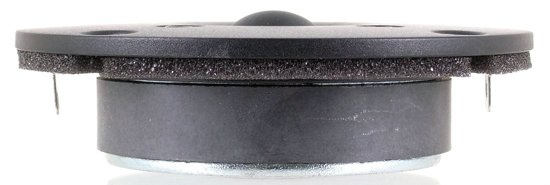
Most modern tweeters don't look the Dynaudio tweeter. Instead of being one half of a sphere, they're one quarter of a sphere. They basically look like a giant contact lens. Because their depth is shallower, they're less prone to cancellation caused by pathlength differences. (At 10Khz, a pathlength difference of just 0.25" can cause a dip between 10-20khz.)
Most modern tweeters look like this, a big contact lens.
Ideally, you would match the waveguide to the dome shape. For instance, a Dynaudio tweeter that's half a sphere (180 degrees) would be mated to a flat baffle. A SB Acoustics tweeter that's about one quarter of a sphere (90 degrees) would be mated to a 90 degree waveguide.
We can 'cheat the rules' a bit when the diaphragm gets very small. For instance, a 3/4" dome doesn't beam until 18,000khz. (speed of sound / 3/4" = 18khz)
Due to the fact that the dome is so darn small, you can basically treat it as if it's flat for all frequencies below 18khz. That's why small diameters are so great for waveguides.
pretty pictures are here:
Waveguide-Augmented Loudspeaker Arrays
First off, the ideal diaphragm shape for a horn or a waveguide is a flat disc if the entrance angle is zero degrees.
IE, if you have an old-school horn and the throat isn't expanding at all, you want to load it with a compression driver or a tweeter that can produce a flat wavefront. It doesn't matter if the driver is physically flat, like a disc, or if it's just a driver that can produce a flat wavefront.

The opposite end of this spectrum would be something like a Dynaudio tweeter. The Dynaudio tweeters are hemispherical. They're "half a sphere." Because they're half a sphere, they're going to produce a wavefront that's 180 degrees wide when the tweeter starts to beam. For instance, with a 1.25" Dyanudio tweeter, you'll get a 180 degree wavefront above 10,800Hz. (This assumed that the dome is perfectly rigid, which it's not. Measure that driver to determine how it behaves in the real world.)

Most modern tweeters don't look the Dynaudio tweeter. Instead of being one half of a sphere, they're one quarter of a sphere. They basically look like a giant contact lens. Because their depth is shallower, they're less prone to cancellation caused by pathlength differences. (At 10Khz, a pathlength difference of just 0.25" can cause a dip between 10-20khz.)
Most modern tweeters look like this, a big contact lens.
Ideally, you would match the waveguide to the dome shape. For instance, a Dynaudio tweeter that's half a sphere (180 degrees) would be mated to a flat baffle. A SB Acoustics tweeter that's about one quarter of a sphere (90 degrees) would be mated to a 90 degree waveguide.
We can 'cheat the rules' a bit when the diaphragm gets very small. For instance, a 3/4" dome doesn't beam until 18,000khz. (speed of sound / 3/4" = 18khz)
Due to the fact that the dome is so darn small, you can basically treat it as if it's flat for all frequencies below 18khz. That's why small diameters are so great for waveguides.
pretty pictures are here:
Waveguide-Augmented Loudspeaker Arrays
- Status
- Not open for further replies.
- Home
- Loudspeakers
- Multi-Way
- Loading a Waveguide With a Dome